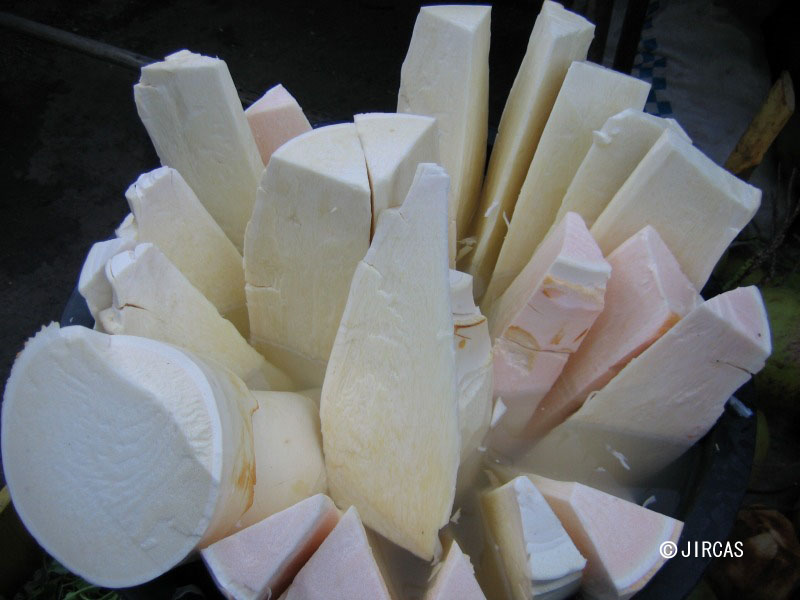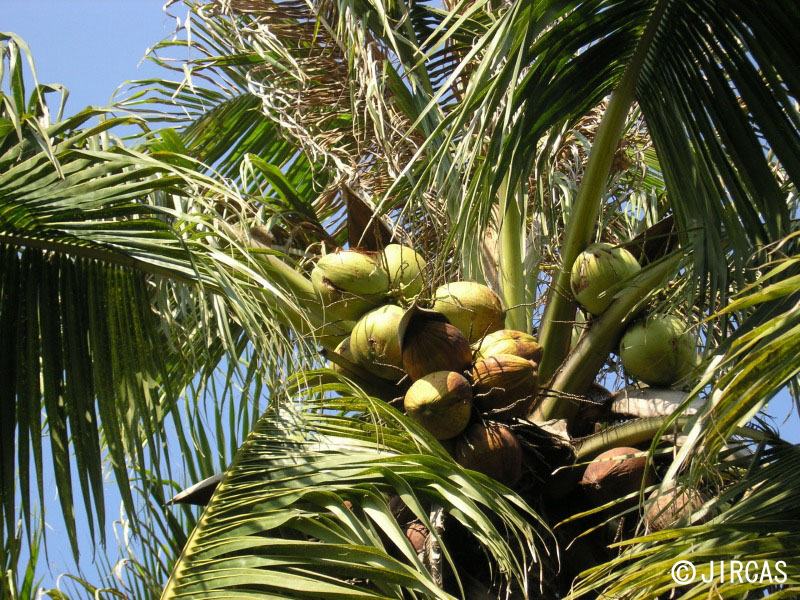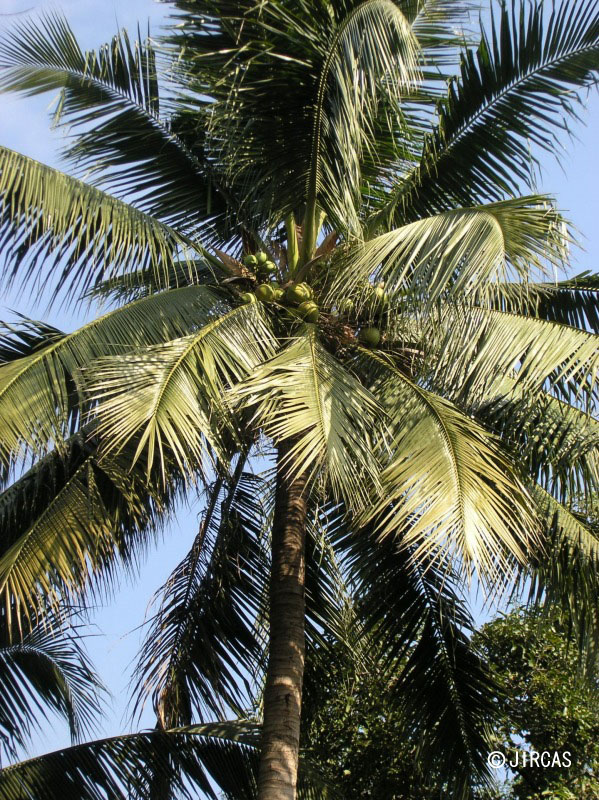Cocos nucifera L. (Palmae)
- Scientific name
- Cocos nucifera L.
- Family name
- Palmae
- Common name
- Coconut (English); kokoyashi (Japanese)
- Local name
- Ma-prao
Tree, stem up to 15 m tall or taller, distinctly annulate, more or less flexuous, base thickened. Leaves spiral, clustered at the distal end of the trunk, pinnately compound, 4–5 m long; leaflets c. 1 m long, coriaceous, flaccid; petiole 1–1.5 m long, channelled, stout. Inflorescence a spadix, c. 1 m long, branches flexuous; subtending spathe c. 1 m long, oblong, hard, and fibrous, splitting lengthwise. Flowers unisexual, green to yellowish green; both male and female flowers within the same inflorescence; male flower small; female flower c. 2.5 cm long, 2-bracteolate, disk annular. Fruit a nut, up to 25 × 25 cm, trigonously obovoid or subglobose, green or yellowish; exocarp fibrous, seed coat hard, endocarp fleshy and oily.
Trees are grown commercially in Thailand and elsewhere mainly for their fruits. A few plantations were recently established to produce heart of palm. Selected cultivars are planted at a spacing of 1.5–2 m.
Coconut hearts of palm are harvested within 2 years of planting, and are available year-round. Hearts of palm are a popular Thai vegetable, served either fried or cooked in various curry dishes.
Coconut hearts of palm are harvested within 2 years of planting, and are available year-round. Hearts of palm are a popular Thai vegetable, served either fried or cooked in various curry dishes.






